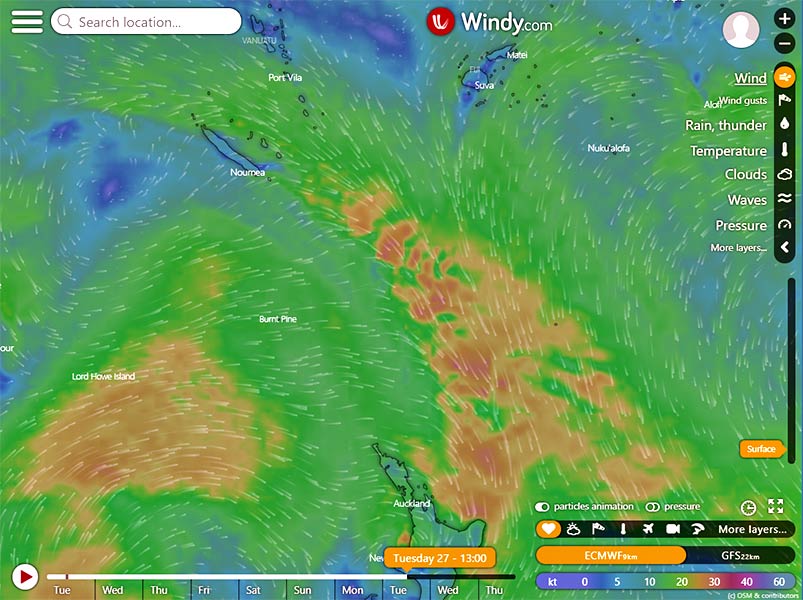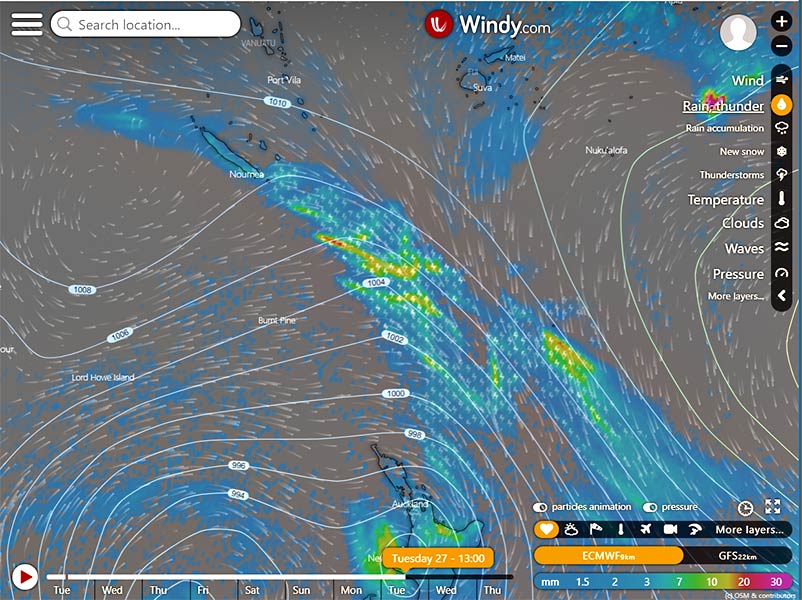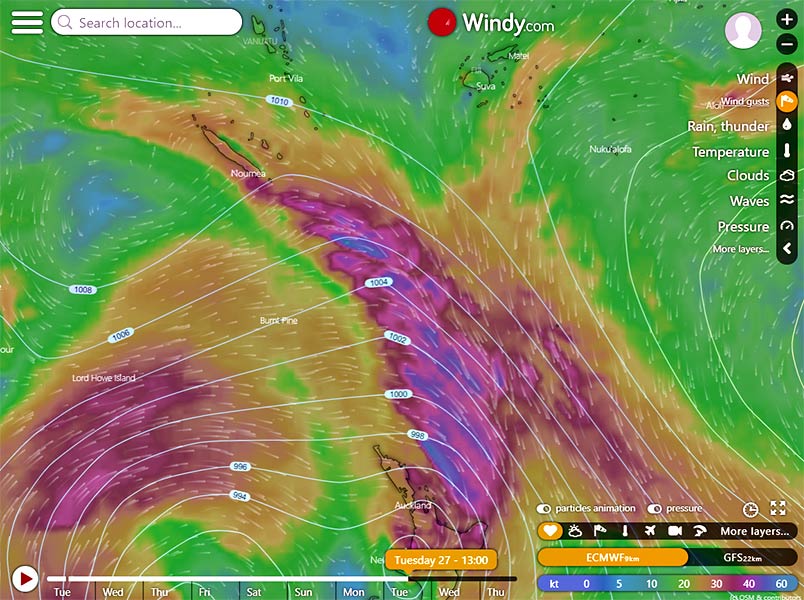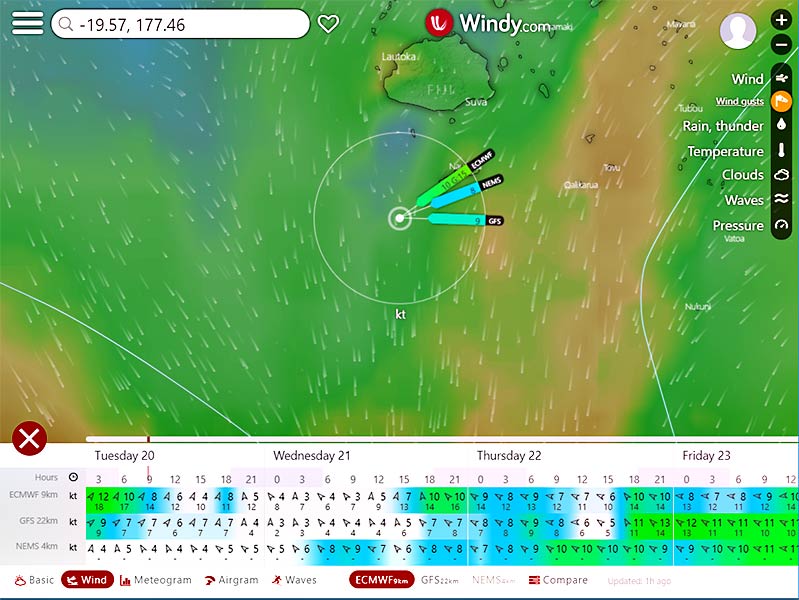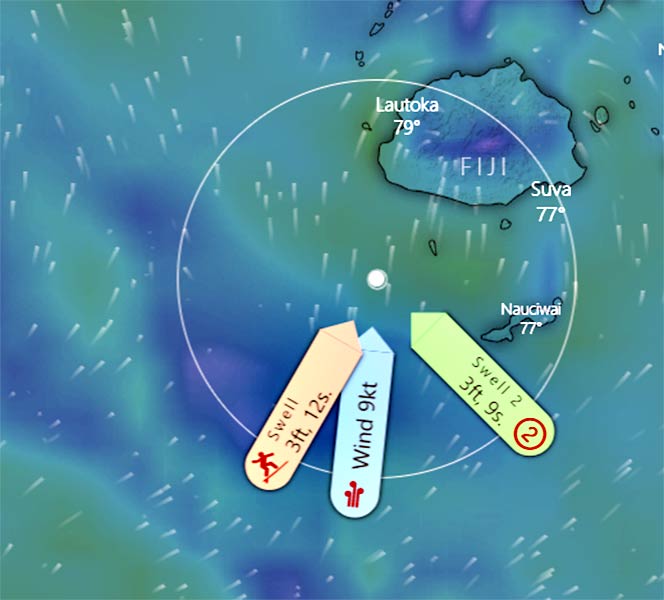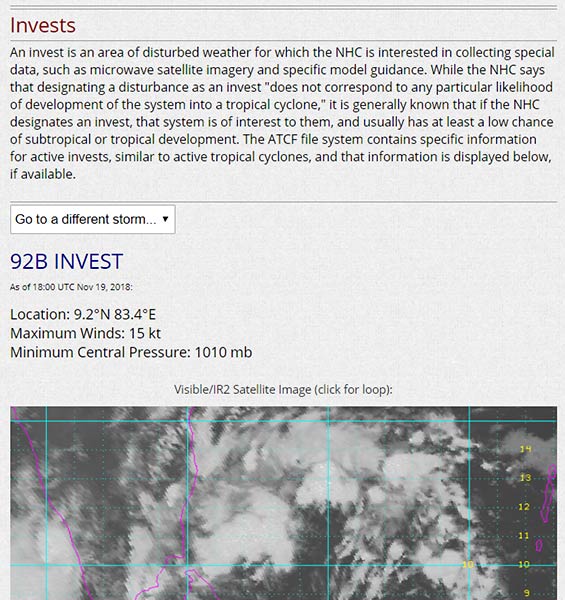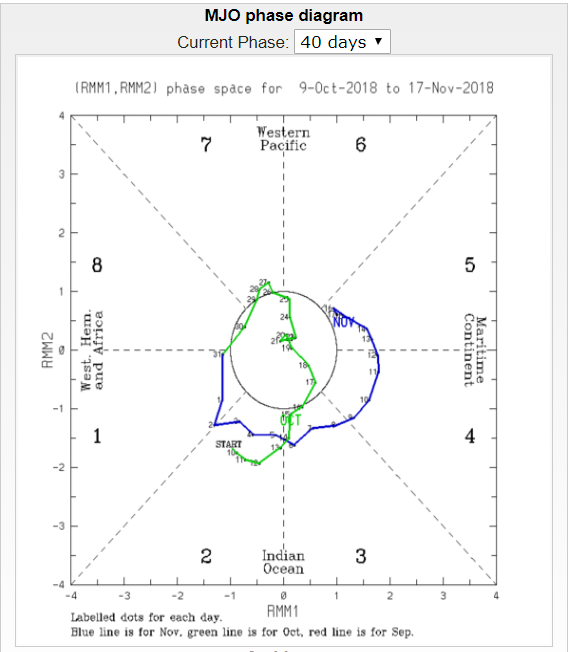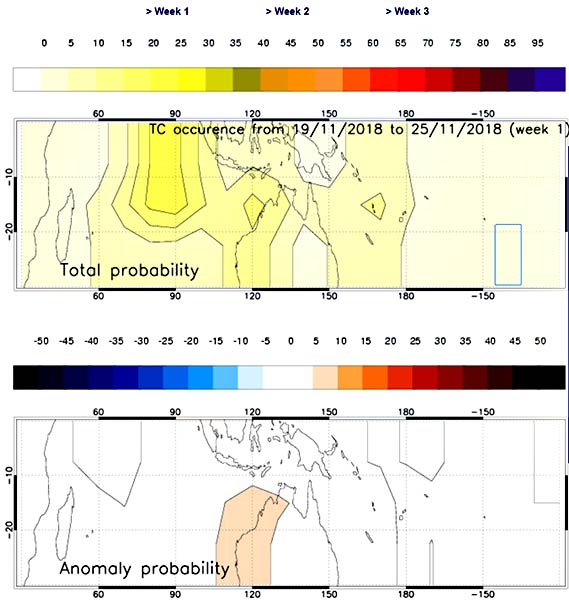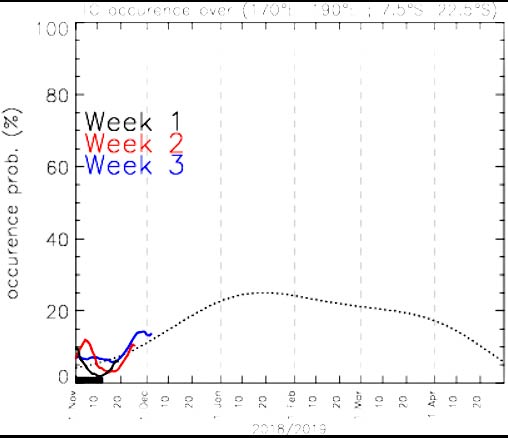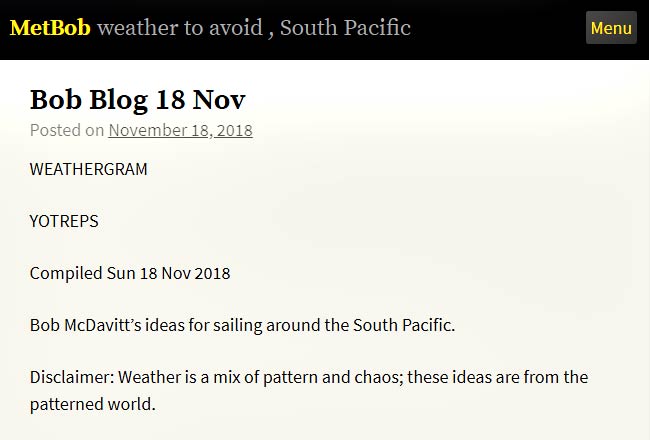November 20, 2018
We’re heading to Suva today to get ready for the sail south to New Zealand. According to most boaters, we’re late. About 40 boats headed out three or four weeks ago, and another 20 hit the road a week after that. We’re tiger bait, yet again.
While we sit here and think about the approaching cyclone (hurricane) season, there are several weather sources we check each morning to look for suitable weather for a passage and to watch for the formation of cyclones. Here they are for your reference…
My first stop is windy.com where I get a large view like the screenshot below.
But there’s so much more information available on Windy. In the screenshot below, I’ve turned on “pressure” and selected Rain, Thunder. This view shows the front we’d have to go through if we left now more clearly than just the wind view.
It’s also worth taking a look at gusts. In the image above, I might think “25 knots isn’t so bad, after all, it’s behind us!” In the image below, I can see that we’d likely encounter 50 knot gusts! Deal breaker!
Windy has a new tool that’s very useful, maybe not so much for passage planning, but for cruising in general. If you right-click on the map and select “Forecast for this location” a bar at the bottom of the screen opens. At the very bottom of that bar, you can select “Wind” and get really handy wind direction and strength arrows on the map. These clearly show the strength and direction of the wind on the three models Windy has available. (Lately, we’ve been favoring ECMWF over the others.)
You can use the same trick for seas, too. Just select “waves” on the bottom line and you get the display below. It’s great in that it shows you both of the major swells along with the wind (and thus, wind waves).
My next stop is usually Tropical Tidbits for storm information.
At the top of the page there is information on any current cyclones. If there are any in our neighborhood, we’re hopefully already aware of them. I scan down the list looking for anything with a S latitude (I’ve been told they don’t cross the equator, so there’s no need to worry about the ones in the Northern Hemisphere).
Of the greatest interest to me is the list of Invests. These are systems that are deemed to be important enough to “invest” resources to monitor them. Again, I scan down to look for anything with a S in the latitude. If any of those are in our corner of the world, I pay careful attention and look at the projected tracks.
But what are the chances of a cyclone forming? There are two places I go to look at that, not every day, but every few days. They are both related to the MJO (Madden-Julian Oscillation). Below is a graph from Australia’s Bureau of Meteorology.
I don’t find that particularly easy to understand, so instead, I usually look at New Caledonia’s Met Service where the experts with a lot at stake have interpreted it for me. (I’m sure they also take into account other very technical concepts that are way beyond my pay grade.)
I just look at my location (Fiji now) and see the probability. By selecting Week 1, Week 2, or Week 3 at the top of the map, you see the updated probability map. If you hover over a spot on the map, you get this graph…
It’s taken me some time to get used to living in the 15 to 20 percent bracket. I was horrified the first time I saw this – I want 0.00% – but I ain’t gonna get it! Not at this time of year. Now I’m pretty happy with something like the image above.
Last, and not least at all, I look to Mr. Bob McDavitt. Bob is a meteorologist from New Zealand who’d been helping boaters out for many years. We owe most, or maybe all, of our success with weather to him. We do our best to pick our own weather windows, but then we turn it over to the expert for the final say. For a very reasonable price, he advises us, and provides us with a voyage plan which often gets updated several times during a passage.
We also pay close attention to his Weekly Weathergram.
I’ve learned so much from reading his Weathergram. Sure, he talks about prevailing conditions and those we’re likely to experience on passage, but he’s a great teacher, passing along great weather-wisdom in each edition.
Bob even managed to dumb it down enough to teach me in his most recent Weathergram by linking to Australia’s “Climate Dogs” videos. Here’s my favorite…
Thanks for that Bob!
I hope someone finds this information useful. Taken all together, it helps us feel better about being tiger bait, yet again. -Rich

